While scouring the glacial slope that comprises England’s eastern coastal cliffs, a pair of Yorkshire fossil hunters made a colossal discovery some 180 million years in the making.
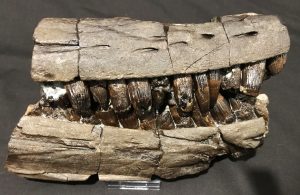
Late last summer, Mark Kemp, 34, a professional and self-taught fossil hunter and preparer, and a friend with whom he shares the hobby, were exploring the steep cliff of Holderness, northwest of Hull, between the towns of Mappleton and Cowden.
This rugged section of coast, made up of messy sedimentary deposits from once-massive glaciers long ago melted, is known to produce bones from dinosaurs and other prehistoric reptiles. That day, Kemp’s partner stumbled upon a glacial erratic (a chunk of exotic rock deposited elsewhere) with a fossil that looked particularly promising.
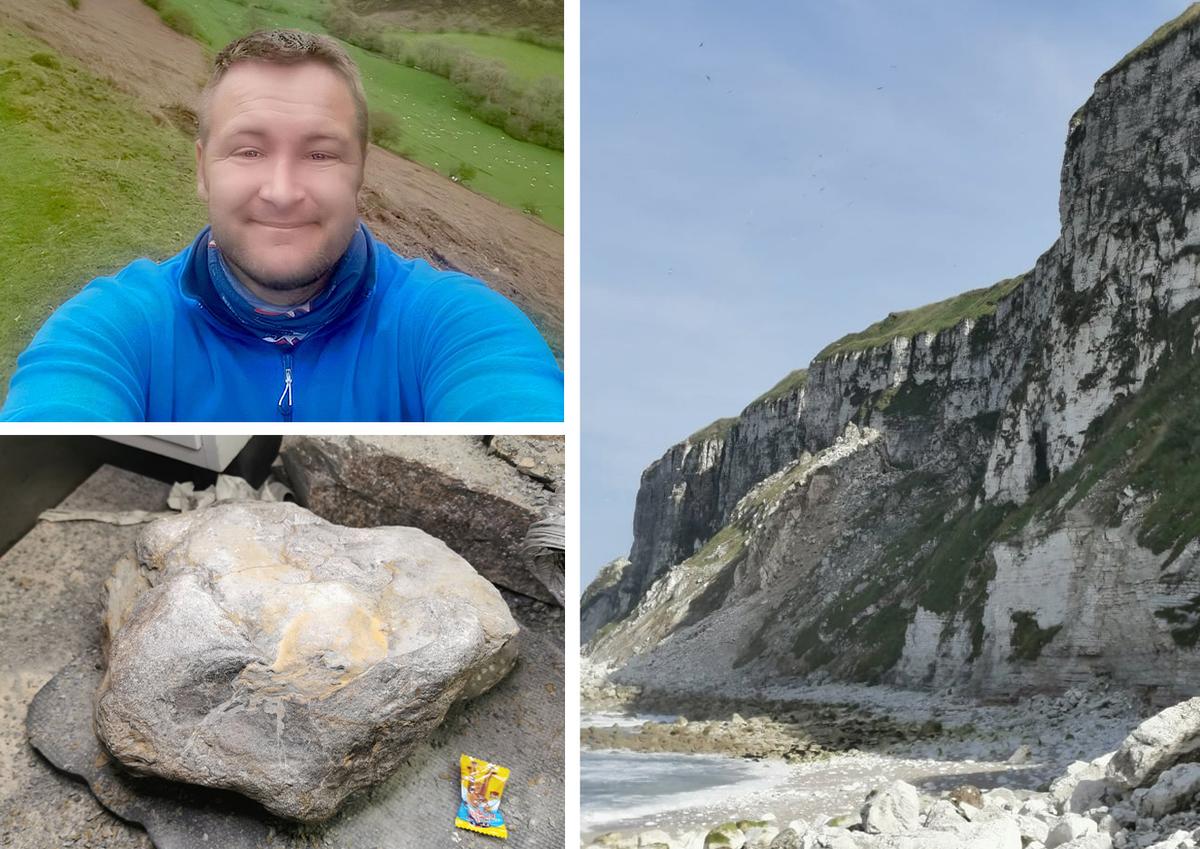 (Above left) Mark Kemp; (Bottom left) A glacial erratic containing the fossilized partial section of a temnodontosaur jaw; (Right) A section of cliff at Holderness, Yorkshire. (Courtesy of Mark Kemp)
(Above left) Mark Kemp; (Bottom left) A glacial erratic containing the fossilized partial section of a temnodontosaur jaw; (Right) A section of cliff at Holderness, Yorkshire. (Courtesy of Mark Kemp)“My friend is yelling at me for my opinion on something, and as soon as I saw the rock in question, I knew it was something special,” Kemp told The Epoch Times. “I immediately knew there were bones and teeth inside and we both agreed that I should take the block and prepare it immediately.”

In his workshop in Hull, Kemp painstakingly etched the rock millimeter by millimeter to reveal enormous conical teeth, and what he learned was a partial section of the jaw of a temnodontosaur, a marine reptile from the Jurassic period, predating even the dinosaurs.
In addition to its enormous teeth, this top predatory marine reptile had a robust and elongated snout; extraordinarily large eyes for hunting; front and rear fins of approximately the same size, for steering; and a triangular dorsal fin. Its vertically aligned tail was its main propulsion.
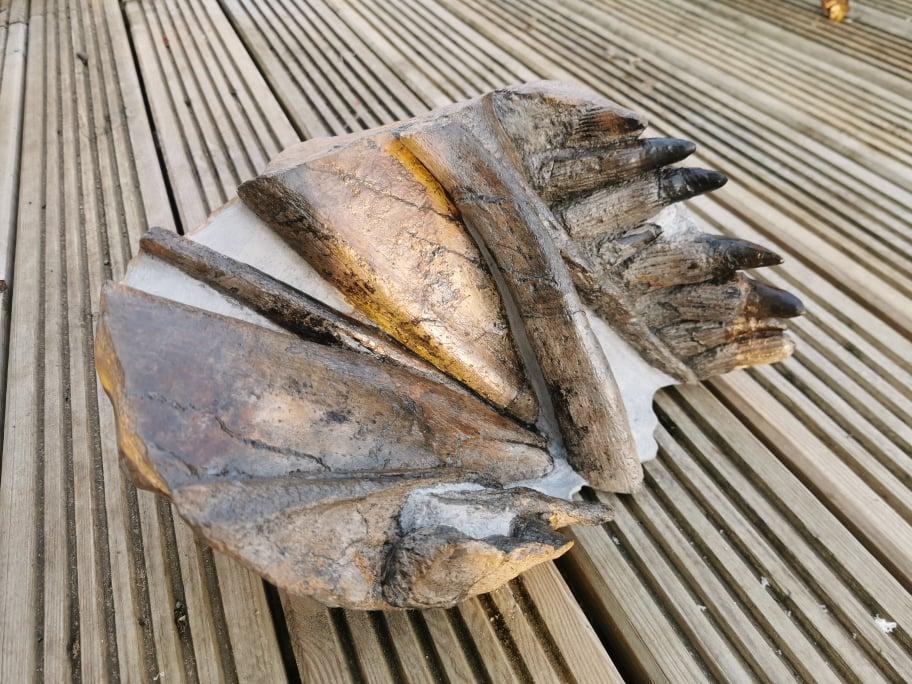
A section of fossilized jaw and teeth from an adult temnodontosaur. (Courtesy of Mark Kemp)
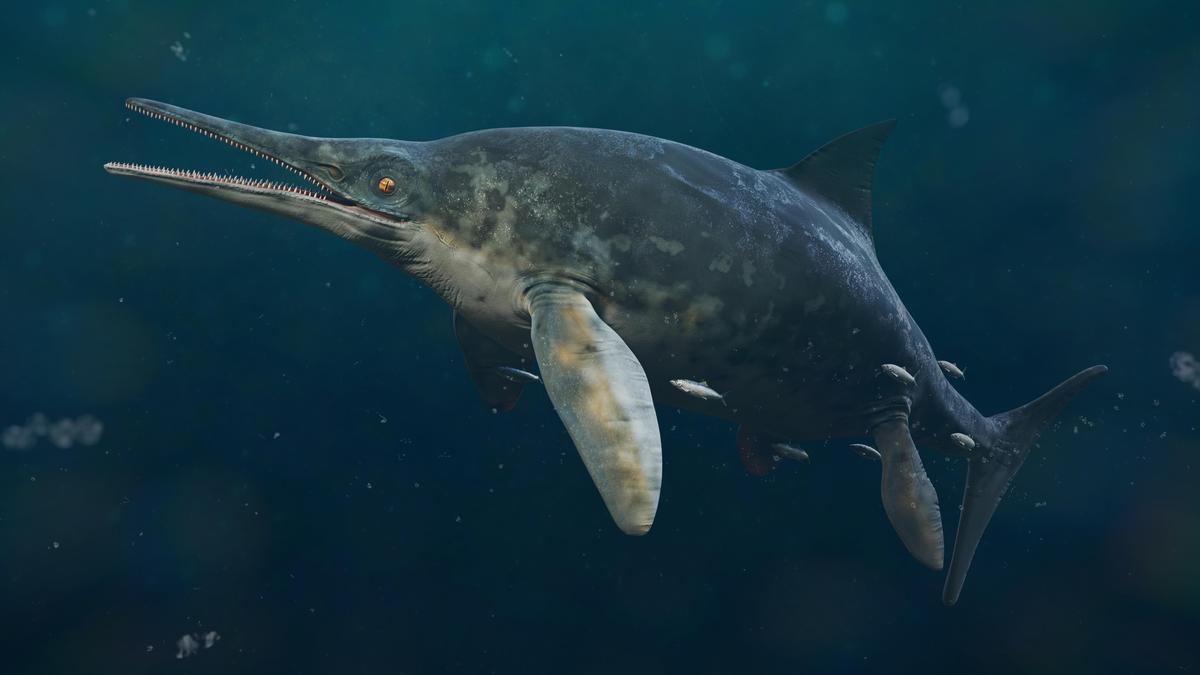
Illustration of a species of temnodontosaur known as an ichthyosaur, dating back to the Jurassic Period, about 180 million years ago. (Illustration: Dotted Yeti/Shutterstock)
“They were extremely large creatures that could easily have grown up to 40 feet,” Kemp told the newspaper, after consulting Dr. Dean Lomax, a leading marine reptile paleontologist. “They had enormous strength in their jaws, which have a crushing power greater than that of modern saltwater crocodiles. “They sailed the seas about 180 million years ago and even predated the dinosaurs.”
This particular temnodontosaurus specimen belongs to a species known as an ichthyosaur, Kemp discovered, and is “one of the best examples of this species from Yorkshire”.
The name “temnodontosaurus” itself from Greek translates as “sharp-toothed lizard.” And based on the size of this specimen’s teeth and jaw, it was estimated that it had a two-meter-long skull and would have been a full-sized adult.
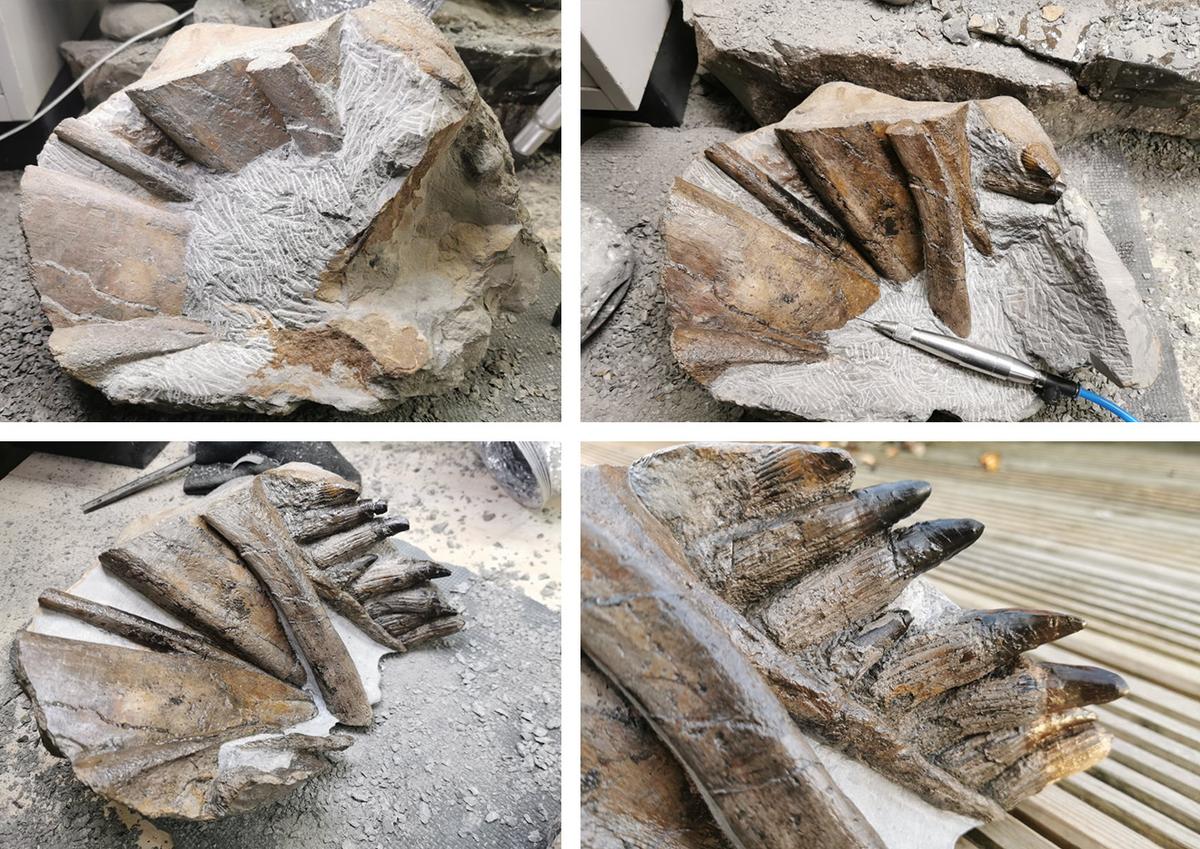
Various stages of fossil preparation by Mark Kemp. (Courtesy of Mark Kemp)
As for Kemp, his decade-long fossil “hobby” has become a profession: he runs a workshop from his home in Bransholme, where he prepares fossils, improves their appearance and preserves them for a paying clientele.
“Fossil hunting opens your mind to what life was like all those years ago,” Kemp said. “If you open a rock and discover a fossil, you know that you are the only living human being who has seen that fossil.
“My dream is to go collect fossils in the most distant corners of the world and discover what is locked in time.”
Over the years, he has found some notable remains, including dinosaur footprints, woolly mammoth bones, cave bear jaws, bison vertebrae, anemones, shells, corals and sponges, all recorded in rocks from eons ago.
Kemp added jokingly: “My collection has grown over the last three years at a somewhat scary rate and I will soon be in a situation where I will need a bigger garage.”
Some more examples of Kemp’s fossil preparation work:
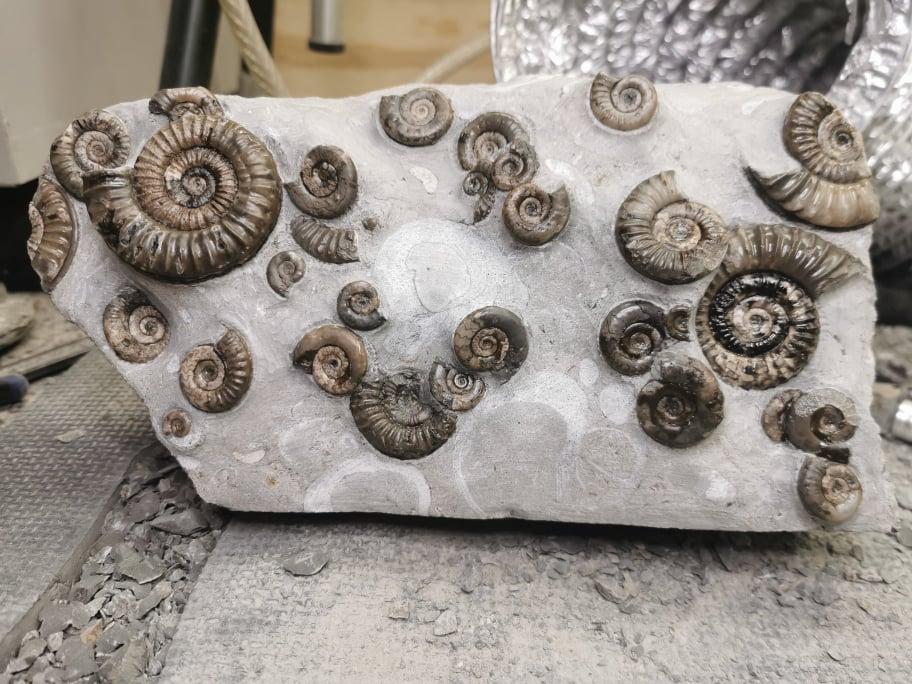
(Courtesy of Mark Kemp)
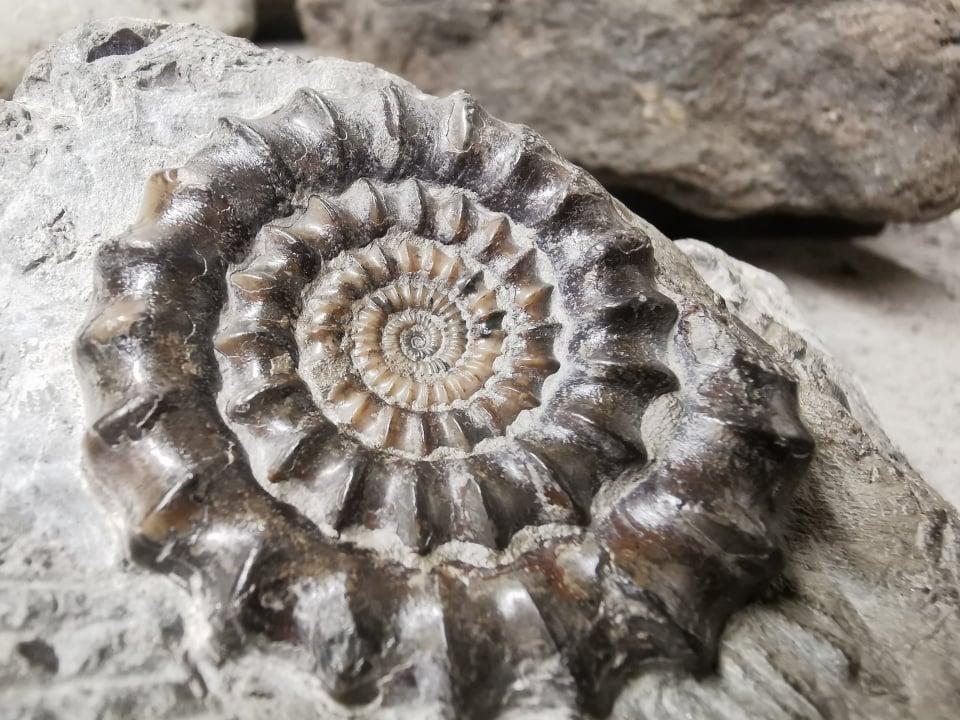
(Courtesy of Mark Kemp)
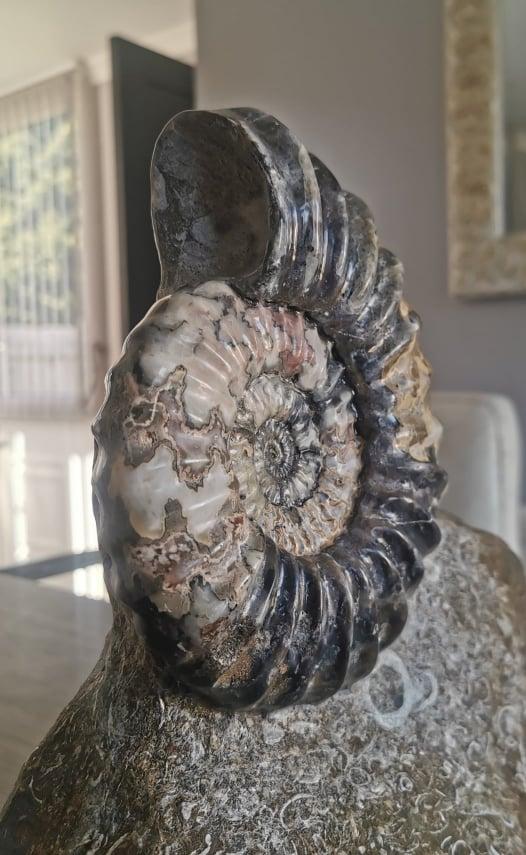
(Courtesy of Mark Kemp)




